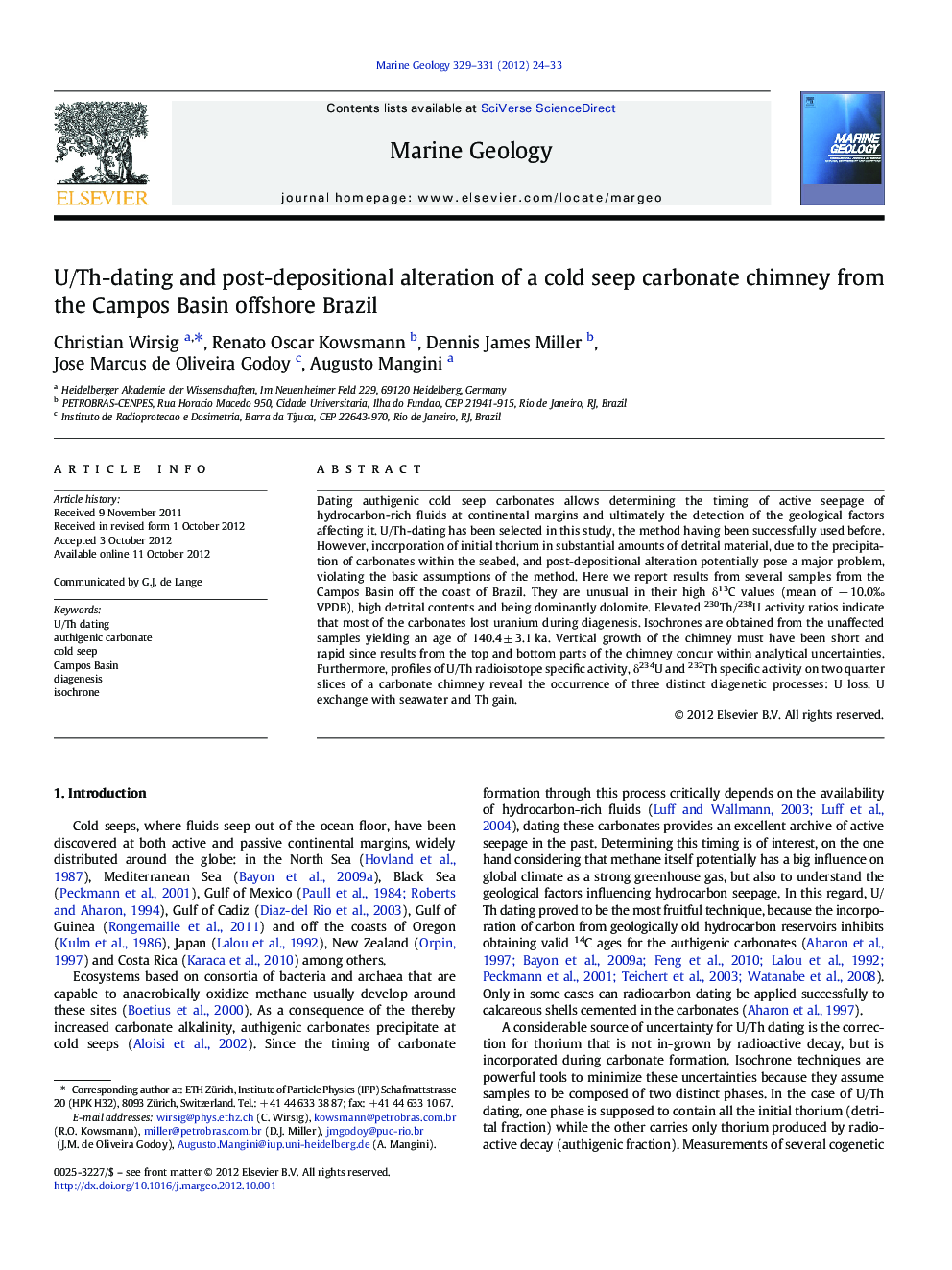| Article ID | Journal | Published Year | Pages | File Type |
|---|---|---|---|---|
| 4718453 | Marine Geology | 2012 | 10 Pages |
Dating authigenic cold seep carbonates allows determining the timing of active seepage of hydrocarbon-rich fluids at continental margins and ultimately the detection of the geological factors affecting it. U/Th-dating has been selected in this study, the method having been successfully used before. However, incorporation of initial thorium in substantial amounts of detrital material, due to the precipitation of carbonates within the seabed, and post-depositional alteration potentially pose a major problem, violating the basic assumptions of the method. Here we report results from several samples from the Campos Basin off the coast of Brazil. They are unusual in their high δ13C values (mean of − 10.0‰ VPDB), high detrital contents and being dominantly dolomite. Elevated 230Th/238U activity ratios indicate that most of the carbonates lost uranium during diagenesis. Isochrones are obtained from the unaffected samples yielding an age of 140.4 ± 3.1 ka. Vertical growth of the chimney must have been short and rapid since results from the top and bottom parts of the chimney concur within analytical uncertainties. Furthermore, profiles of U/Th radioisotope specific activity, δ234U and 232Th specific activity on two quarter slices of a carbonate chimney reveal the occurrence of three distinct diagenetic processes: U loss, U exchange with seawater and Th gain.
► U/Th, XRD and stable isotope results of several authigenic carbonates ► Isochrone dating points to rapid but short carbonate chimney growth during MIS 6 ► U/Th radioisotope profile along two carbonate chimney quarter slices ► Detailed investigation of diagenetic processes
